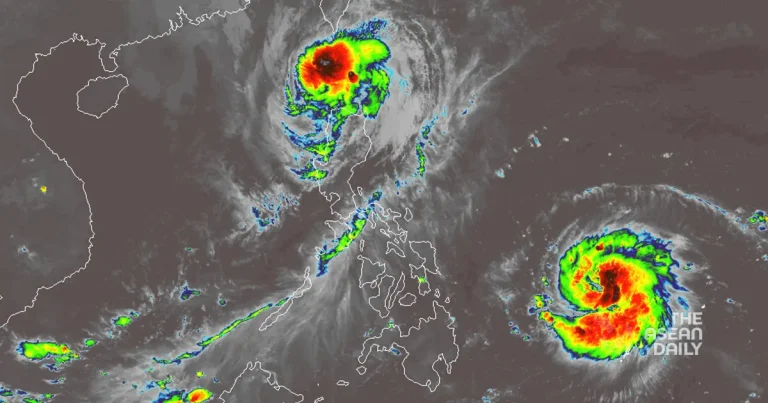15-11-2024 (MANILA) The Philippines faced yet another devastating blow as Typhoon Usagi made landfall in Cagayan province on Thursday, marking the fifth major storm to strike the archipelago in just three weeks, amid mounting concerns over the nation’s disaster response capabilities.
The powerful storm struck the coastal town of Baggao at 5:30 AM GMT, bringing winds reaching 175 kilometres per hour, forcing authorities to launch urgent evacuation operations in vulnerable coastal regions. This latest weather system arrives as the country struggles to recover from a series of destructive storms that have already claimed 159 lives.
Local disaster official Edward Gaspar reported that evacuation efforts intensified as the typhoon approached. “We’ve moved from preemptive to forced evacuations,” he said, with initial reports indicating at least 1,404 residents taking shelter in a municipal gymnasium alone. Cagayan’s civil defence chief Rueli Rapsing projected that approximately 40,000 people would require evacuation.
The situation is particularly dire as more than 5,000 residents remain displaced from previous storms, unable to return home due to the swollen Cagayan River, the country’s largest waterway. The weather service warned of “intense to torrential rain” and dangerous coastal waves up to three metres high over the next 48 hours.
President Ferdinand Marcos, visiting storm-affected areas, emphasised the critical importance of evacuation compliance. “While we cannot prevent typhoons from hitting the country, we can take steps to reduce their impact,” he stated, linking the intensifying weather patterns to climate change.
The United Nations has requested $32.9 million in emergency aid for the worst-affected regions, with UN Coordinator Gustavo Gonzalez highlighting the compound nature of the crisis: “Typhoons are overlapping. As communities attempt to recover, the next tropical storm is already hitting them again.”
The UN’s assessment paints a grim picture of the situation, revealing that 207,000 houses have been damaged or destroyed across the affected regions. Nearly 700,000 people are currently seeking temporary shelter, with many lacking basic necessities such as sleeping mats, hygiene supplies, and cooking equipment. Access to safe drinking water remains a critical concern, while extensive agricultural damage threatens long-term food security in the region.
Adding to the nation’s concerns, Tropical Storm Man-yi is forecast to strike the Manila region this weekend, following a more southerly track due to high pressure over southern Japan.
Scientists note that storms in the Asia-Pacific region are showing increasingly dangerous patterns, forming closer to coastlines and intensifying more rapidly due to climate change. The Philippines typically experiences about 20 major storms annually, contributing to persistent poverty cycles in vulnerable regions.




